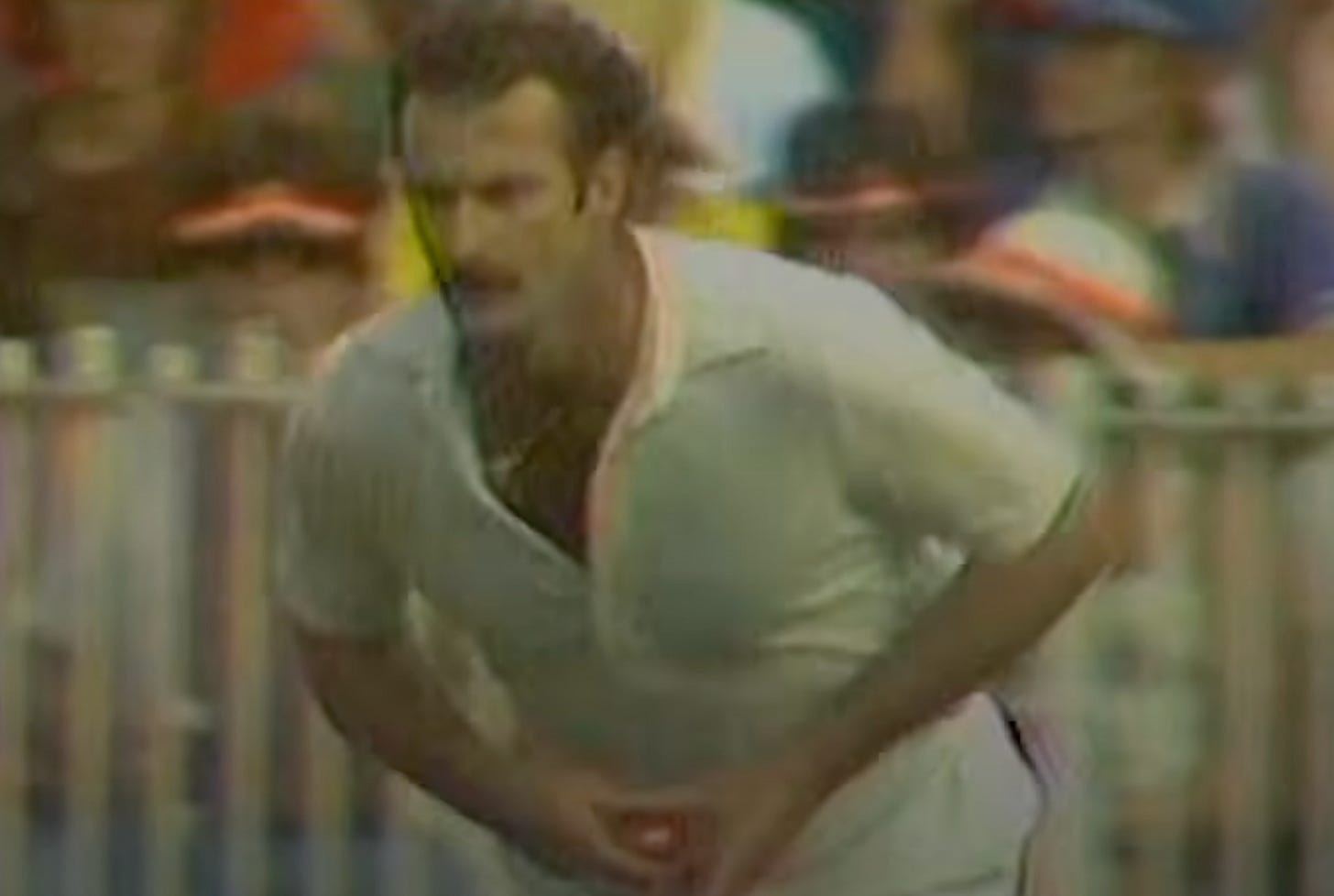The Making of a Fast Bowler
Fisher Classics examination of a spiritual force in the great game
“There are sportsmen and there are myths. Some, like Dennis Keith Lillee, are both.”
Peter Lalor on Lillee
Born a generation too late to witness the menace and mastery of Dennis Lillee, my understanding of him has always come secondhand — a myth passed down in reverent tones. The wild hair. The swagger. The broken back and the astonishing comeback. The headbands. The flaring nostrils. The rhythmic, menacing approach. A legend preserved not just in numbers, but animated in memory.
My own father-in-law described Lillee’s Boxing Day feats, during my debut Christmas with my to-be wife’s family. His eyes widened as he recalled a heaving MCG and the fully fuelled crowd baying for wickets as Lillee steamed in.
100,000 voices chanting: “Lill-ee! Lill-ee! Lill-ee!”
No animated banners. No crowd activations. No hype music. Just pure theatre. Man against man. A warrior off the long run.

That image — the square jaw, the laser-focused eyes — is far more intimidating than any AI-generated graphic on ball speed. Lillee’s skill, for me, belongs to legend.
What adds to that myth is his stoicism. I can’t recall seeing Lillee interviewed at any real length during my cricket (and actual) adolescence. Aside from the odd appearance in an ad (even then, mostly silent), the video generation has largely come to know him through re-telling’s. Stories. Myths.
So when the opportunity came to create an artwork for The Chappell Foundation’s 2025 Dinner, I felt it had to honour its keynote guest: the man, the myth, the fast bowler — the sporting god.
Keep reading with a 7-day free trial
Subscribe to Cricket Et Al to keep reading this post and get 7 days of free access to the full post archives.




